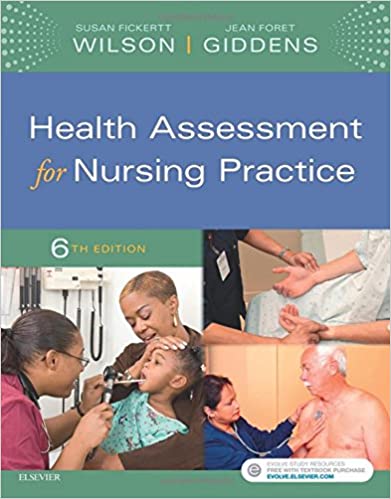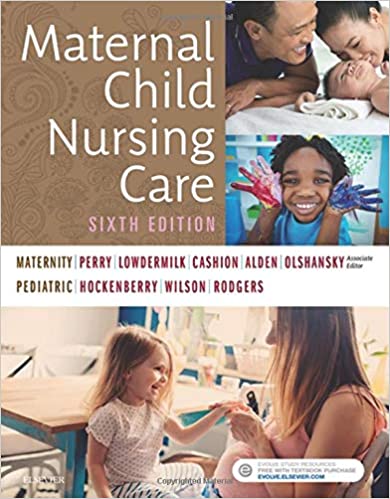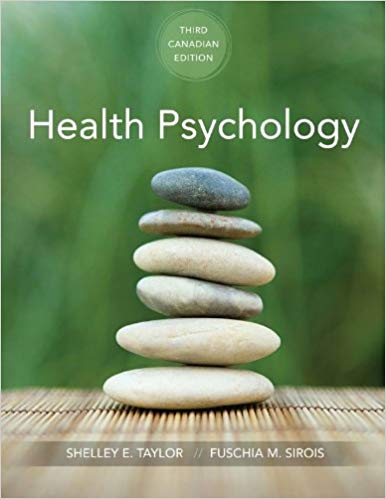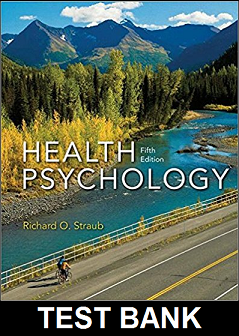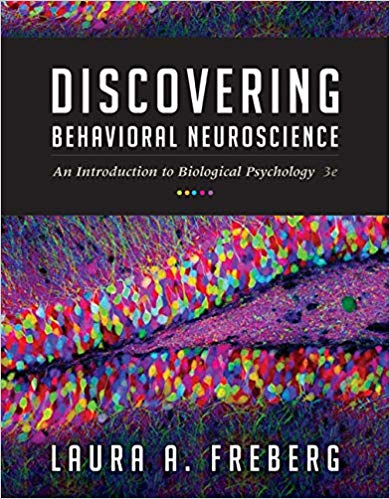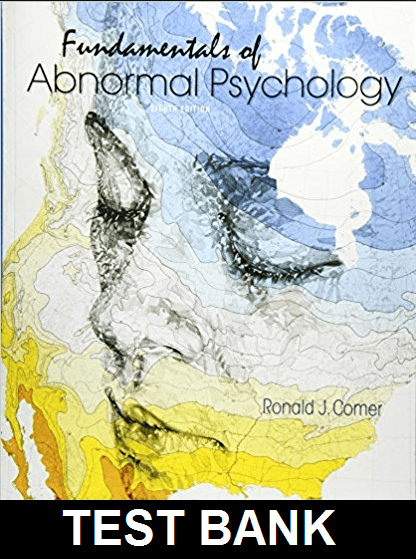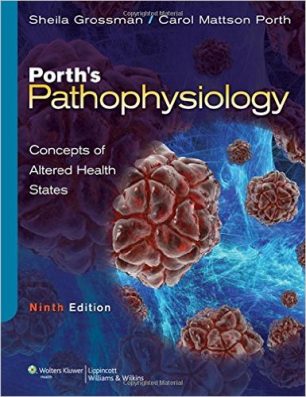Test Bank for Holes Human Anatomy Physiology 13th Edition Shier
ch01
1. Most of the terminology to name and describe body parts and their functions comes from
A. Latin and Greek.
B. English and Italian.
C. picture drawings on the cave walls of our ancestors.
D. the language of hunter-gatherers.
2. An investigator who conducts an experiment to determine how temperature changes affect the rate at
which the heart beats is most likely a(n)
A. anatomist.
B. physiologist.
C. chemist.
D. biochemist.
3. Anatomy and physiology are difficult to separate because
A. physiological functions depend on anatomical structures.
B. physiological functions in an organism are ongoing.
C. body parts take up space.
D. our understanding of physiology is changing more than our understanding of anatomy.
4. The activities of an anatomist consist of ______, whereas those of a physiologist consist of _____.
A. observing body parts; studying functions of body parts
B. conducting experiments; making microscopic examinations
C. studying molecules; observing forms of the body parts
D. sketching; dissecting
5. The origin of the term “anatomy” is related to
A. the Greek word for “function.”
B. the name of the first anatomist.
C. the Greek word for “cutting up.”
D. the function of internal organs.
6. The term “physiology” is related to
A. the Latin for “physical shape.”
B. the structure of internal organs.
C. the Greek for “cutting up.”
D. the Greek for “relationship to nature.”
7. The recent discovery of taste receptors that detect sweetness in the small intestine illustrates that
A. chemical responses occur in only one part of the body.
B. new discoveries about anatomy and physiology are still being made.
C. everything there is to know about anatomy and physiology has been discovered.
D. the molecular and cellular level is of little interest in anatomy and physiology.
8. Which of the following is not true of organelles?
A. They carry on specific activities.
B. They are only in cells of humans.
C. They are composed of aggregates of large molecules.
D. They are found in many types of cells.
9. Which of the following lists best illustrates the idea of increasing levels of complexity?
A. Cells, tissues, organelles, organs, organ systems
B. Tissues, cells, organs, organelles, organ systems
C. Organs, organelles, organ systems, cells, tissues
D. Organelles, cells, tissues, organs, organ systems
10. In all organisms, the basic unit of structure and function is
A. the atom.
B. the molecule.
C. the macromolecule.
D. the cell.
11. Specialized cell types organized in a way that provides a specific function form
A. tissues, which build organs.
B. organs, which build tissues.
C. organ systems, which build tissues.
D. atoms, which comprise tissues.
12. Simple squamous epithelium is an example of a(n)
A. organ system.
B. organ.
C. tissue.
D. molecule.
13. Assimilation is
A. changing absorbed substances into different chemical forms.
B. breaking down foods into nutrients that the body can absorb.
C. eliminating waste from the body.
D. an increase in body size without a change in overall shape.
14. The ability of an organism to sense and react to changes in its body illustrates
A. circulation.
B. respiration.
C. responsiveness.
D. absorption.
15. The removal of wastes produced by metabolic reactions is
A. metabolism.
B. absorption.
C. assimilation.
D. excretion.
16. Which of the following characteristics of life and their descriptions are correct?
A. Responsiveness-obtaining and using oxygen to release energy from food
B. Assimilation-sensing changes inside or outside the body and reacting to them
C.Respiration-changing absorbed substances into forms that are chemically different from those that
entered the body fluids
D. Circulation-the movement of substances in body fluids
17. Metabolism is defined as _____.
A. the removal of wastes produced by chemical reactions
B. the breakdown of substances into simpler forms
C. the taking in of nutrients
D. all the chemical reactions occurring in an organism that support life
18. Which of the following processes does not help to maintain the life of an individual organism?
A. Responsiveness
B. Movement
C. Reproduction
D. Respiration
19. Which of the following processes is most important to the continuation of the human species?
A. Responsiveness
B. Movement
C. Reproduction
D. Respiration
20. Homeostasis is the
A. inability to keep body weight within normal limits.
B. room temperature decreasing because a window is open.
C. ingestion of more food than you need to eat.
D. tendency of the body to maintain a stable internal environment.
21. Which of the following is not an example of a homeostatic mechanism in the human body?
A. Shivering when body temperature falls below normal.
B. Increasing heart rate and force of contraction when blood pressure falls.
C. Retaining fluid leading to retaining more fluid.
D. Secreting insulin after a meal to return blood sugar concentration toward normal.
22. Living organisms use oxygen to __________________.
A. reduce heat production
B. donate electrons for cellular metabolism
C. release energy stored in the molecules of food
D. remove metabolic wastes
23. Maintaining a stable internal environment typically requires
A. positive feedback mechanisms.
B. an unstable outside environment.
C. decreased atmospheric pressure.
D. negative feedback mechanisms.
24. A blood clot stimulating further clotting is an example of
A. a positive feedback mechanism.
B. a negative feedback mechanism.
C. a process turning itself off.
D. nervous system communication.
25. Which of the following must the human body obtain from the environment in order to survive?
A. Nitrogen
B. Wastes
C. Water
D. Carbon dioxide
26. Homeostasis exists if concentrations of water, nutrients, and oxygen in the body and heat and pressure
__________.
A. decrease steadily
B. remain within certain limited ranges
C. increase when the body is stressed
D. fluctuate greatly between very high and low values
27. In negative feedback mechanisms changes away from the normal state
A. stimulate changes in the same direction.
B. inhibit all body reactions.
C. stimulate changes in the opposite direction.
D. stimulate a reduction in all requirements of the body.
28. Positive feedback mechanisms
A. cause long term changes.
B. move conditions away from the normal state.
C. bring conditions back to the normal state.
D. usually produce stable conditions.
29. Which of the following illustrates a positive feedback mechanism?
A. Maintaining blood pressure
B. Uterine contractions during childbirth
C. Body temperature control
D. Control of blood sugar
30. Positive feedback mechanisms usually produce
A. changes returning values toward a set point.
B. stable conditions around a set point.
C. unstable conditions.
D. long-term changes.
31. Which of the following is true concerning the female reproductive system?
A. It produces female sex cells.
B. It transports the female sex cells.
C. It can support the development of an embryo.
D. All of the above.
32. Which of the following organs is in the abdominopelvic cavity?
A. The heart
B. The trachea
C. The thymus
D. The liver
33. The membrane on the surface of a lung is called the
A. visceral pleura.
B. parietal pleura.
C. visceral pericardium.
D. parietal pericardium.
34. Which action is the main function of the digestive system?
A. Formation of cells
B. Movement of body parts
C. Absorption of nutrients
D. Providing oxygen for the extraction of energy from nutrients
35. Which of the following is not part of the female reproductive system?
A. The uterus
B. The uterine tube
C. The vulva
D. The bulbourethral gland
36. The thoracic cavity lies _____________ the abdominopelvic cavity.
A. dorsal (posterior) to
B. ventral (anterior) to
C. superior to
D. inferior to37. Blood cells are produced in the organs of the _______ system.
A. endocrine
B. skeletal
C. respiratory
D. muscular
38. A parietal layer of a serous membrane _______, whereas a visceral layer of a serous membrane
________.
A. covers organs; lines cavities
B. lines cavities; covers organs
C. secretes serous fluid; secretes mucus
D. secretes mucus; secretes a serous fluid
39. Cell death first occurs
A. at age 60.
B. at age 50.
C. at puberty.
D. in the fetus.
40. An obstetrician tells a 42-year-old patient that she can have a healthy baby, but that she is of “advanced
maternal age.” The patient is so upset that she fails to listen to the rest of the doctor’s advice, goes home
in a huff, and immediately dyes her hair, buys a miniskirt, and signs up for botox injections to smooth the
tiny lines near her eyes. She is misinterpreting the doctor’s statement because it referred to
A. the age of the sperm.
B. the age of her eggs.
C. her risk of developing diabetes.
D. her cholesterol level, not her appearance.
41. Wrinkled and sagging skin results from
A. drinking too much water.
B. heredity only.
C. loss of subcutaneous fat and less elastin and collagen.
D. excess subcutaneous fat.
42. Signs of aging at the cellular level are
A. graying hair, waning strength, and wrinkles.
B. unrepaired DNA and abnormal proteins.
C. impaired cell division and the ability to break down and recycle worn cell parts.
D. a fatty liver and clogged blood vessels.
43. One characteristic that centenarians share is
A. a high level of exercise throughout life.
B. long-lived relatives.
C. following the Mediterranean diet.
D. never having smoked.
44. An anatomical section that separates the body into right and left portions is a __________ section.
A. frontal
B. transverse
C. coronal
D. sagittal
45. The upper midportion of the abdomen is called the ____region.
A. hypochondriac
B. iliac
C. hypogastric
D. epigastric
46. When the body is placed in the anatomical position, which of the following is not true?
A. The head is facing to the front.
B. The palms are facing backward.
C. The body is erect.
D. The upper limbs are at the sides.
47. Paired organs, such as the kidneys or lungs, are said to be
A. bisexual.
B. bilingual.
C. bilateral.
D. bivalent.
48. The anatomical term that indicates a structure close to the surface is
A. anterior.
B. proximal.
C. superficial .
D. superior.
49. Which of the following are vital signs?
A. Body temperature, blood pressure, and pulse rate
B. Appearance of the skin, red blood cell count, oxygen level
C. Body weight, age, gender
D. Visual acuity and auditory sharpness
50. Ultrasonography is most useful for diagnostic examination of
A. dense organs, such as bones.
B. air-filled organs, such as lungs.
C. soft internal structures, such as fetuses.
D. microscopic structures.
51. Magnetic resonance imaging uses
A. X rays.
B. a radio antenna.
C. radioisotopes.
D. high-frequency sound waves.
52. Magnetic resonance imaging might be used to
A. distinguish between normal and cancerous tissue.
B. examine an injured knee.
C. obtain a sectional view of the brain.
D. do all of the above.
53. The transition from a hunter-gatherer to an agricultural lifestyle greatly changed the types of diseases and
injuries that early peoples suffered.
True False
54. Patterns of growth in preserved bones and tooth decay reflect the health of the people of which they were
a part.
True False
55. The field of medicine arose as early healers abandoned superstition and ideas about magic and started
using natural chemicals and wondering why they were effective at treating illness.
True False
56. Cadaver dissection is against the law in the U.S.
True False
57. The anatomy of a body part is closely related to its physiology.
True False58. We know all there is to know about the structure and function of the human body.
True False
59. Cells with similar functions aggregate into organelles.
True False
60. Macromolecules are built of atoms.
True False
61. Organ systems consist of organs, which consist of tissues.
True False
62. A cell is the basic unit of structure and function of an organism.
True False
63. Metabolism refers to all of the chemical reactions in an organism that support life.
True False
64. Absorption is the ability to exhale carbon dioxide.
True False
65. Reproduction is the change in body characteristics over time.
True False
66. Oxygen is the primary raw material for new living material.
True False
67. Temperature is a form of energy, whereas heat is a measurement of the intensity of the temperature.
True False
68. Homeostasis is the body’s maintenance of an unstable internal environment.
True False
69. The maintenance of a steady body temperature in the face of fluctuating environmental conditions
illustrates homeostasis.
True False
70. The diaphragm separates the thoracic and the abdominopelvic cavities.
True False
71. The parietal pericardium is attached to the surface of the heart.
True False
72. The organ systems responsible for integration and coordination are the nervous and endocrine systems.
True False
73. Kidneys are part of the lymphatic system.
True False
74. The muscular system is responsible for body movements, maintenance of posture, and production of body
heat.
True False
75. The digestive system filters wastes from the blood.
True False
76. The parietal pleura is a visceral membrane.
True False
77. The oral, nasal, orbital, and middle ear cavities are in the dorsal cavity.
True False78. Aging begins in the fetus.
True False
79. Chromosomes get longer as a cell ages.
True False
80. Ceroid pigments and lipofuscin accumulate with aging, impairing a cell’s ability to withstand the
damaging effects of oxygen free radicals.
True False
81. The ears are lateral to the eyes.
True False
82. The elbow is distal to the wrist.
True False
83. The anatomical position is lying down, as a cadaver would be positioned.
True False
84. Agriculture began in some countries as recently as _____ years ago.
________________________________________
85. Dissection of human bodies became part of medical education in the ______ century.
________________________________________
86. The branch of science that deals with the structure of human body parts is called _____.
________________________________________
87. The branch of science that deals with the functions of human body parts is called ______.
________________________________________
88. A group of cells with common properties that are organized into a layer or mass is a(n) _____.
________________________________________
89. A subcellular structure built of assemblies of macromolecules that carries out a particular function is a(n)
_____________.
________________________________________
90. The process by which food substances are chemically changed into simpler forms that can be absorbed is
called ______.
________________________________________
91. The term ______ refers to an increase in body size without overall shape change.
________________________________________
92. The most abundant substance in the human body is _____.
________________________________________
93. Self-regulating control mechanisms usually operate by a process called ______ feedback.
________________________________________
94. The potential space between the _______ membranes is called the pleural cavity.
________________________________________
95. The chemicals endocrine glands secrete are called _____.
________________________________________
96. The heart is part of the ______ system.
________________________________________
97. Individuals who live more than 100 years are called______.
________________________________________98. Standing erect with face and palms forward and upper limbs at the sides describes the ____________
position.
________________________________________
99. A lengthwise cut that divides the body into right and left portions is termed ___________.
________________________________________c
h
0
1
K
e
y
1
.
A
2
.
B
3
.
A
4
.
A
5
.
C
6
.
D
7
.
B
8
.
B
9
.
D
1
0
.
D
1
1
.
A
1
2
.
C
1
3
.
A
1
4
.
C
1
5
.
D
1
6
.
D
1
7
.
D
1
8
.
C
1
9
.
C
2
0
.
D
2
1
.
C
2
2
.
C
2
3
.
D
2
4
.
A
2
5
.
C
2
6
.
B
2
7
.
C
2
8
.
B
2
9
.
B
3
0
.
C
3
1
.
D
3
2
.
D
3
3
.
A
3
4
.
C
3
5
.
D
3
6
.
C37. B
38. B
39. D
40. B
41. C
42. C
43. D
44. D
45. D
46. B
47. C
48. C
49. A
50. C
51. B
52. D
53. TRUE
54. TRUE
55. TRUE
56. FALSE
57. TRUE
58. FALSE
59. FALSE
60. TRUE
61. TRUE
62. TRUE
63. TRUE
64. FALSE
65. FALSE
66. FALSE
67. FALSE
68. FALSE
69. TRUE
70. TRUE
71. FALSE
72. TRUE
73. FALSE
74. TRUE75. FALSE
76. FALSE
77. FALSE
78. TRUE
79. FALSE
80. TRUE
81. TRUE
82. FALSE
83. FALSE
84. 6,000
85. twentieth or 20th
86. anatomy
87. physiology
88. tissue
89. organelle
90. digestion
91. growth
92. water
93. negative
94. pleural
95. hormones
96. cardiovascular
97. centenarians
98. anatomical
99. sagittalch01 Summary
Category # of Questions
Blooms Level: 1. Remember 49
Blooms Level: 2. Understand 33
Blooms Level: 3. Apply 17
Boxed Reading: Clinical Application 1.1 3
Boxed Reading: Vignette 1
Learning Outcome: 01.01 7
Learning Outcome: 01.02 10
Learning Outcome: 01.03 11
Learning Outcome: 01.04 10
Learning Outcome: 01.05 19
Learning Outcome: 01.06 19
Learning Outcome: 01.07 9
Learning Outcome: 01.08 10
Shier – Ch01 Introduction… 99
Topic: Body Orientation 9


